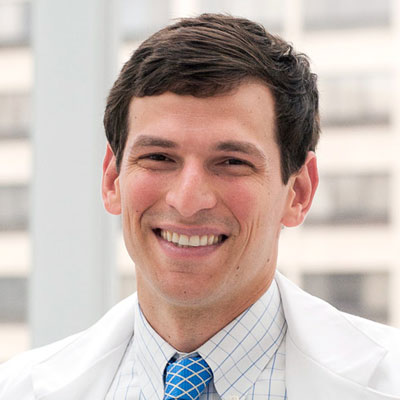This story is part of The Cancer Letter’s ongoing coverage of COVID-19’s impact on oncology. A full list of our coverage, as well as the latest meeting cancellations, is available here.
David C. Fajgenbaum knows all about facing the unknown.


Fajgenbaum wasn’t expected to live more than 5 years once he was diagnosed with idiopathic multicentric Castleman disease in 2010. He experienced multiple organ failure, he’s been through cytokine storm syndrome, and he has had chemotherapy.
Over the years, Fajgenbaum, now assistant professor of translational medicine and human genetics, and associate director of patient impact with the University of Pennsylvania Orphan Disease Center, exhausted every treatment option available for the disease before he began conducting his own research—which ultimately saved his life.
Research for IMCD includes study of interleukin-6 inhibitors, agents used to treat the cytokine storm. Now, it appears that the science of cytokine storm syndrome associated with IMCD mirrors that of massive cytokine release in COVID-19. Fajgenbaum has pivoted his research toward IL-6 inhibitors for use in the COVID-19 setting.
“Our opening ceremony speaker used his own disease and his own scientific quest in exactly that way. He pivoted from his disease to COVID-19, because of the commonalities they shared,” Chief Executive Officer of the American Society of Clinical Oncology Clifford A. Hudis said to The Cancer Letter (The Cancer Letter, June 5, 2020).
In his lecture May 30, during the openning session of ASCO’s virtual annual meeting, Fajgenbaum focused on his experiences living with Castleman disease, research into the disease, and its overlap with COVID-19. Fajgenbaum is also the author of Chasing My Cure: A Doctor’s Race to Turn Hope into Action; A Memoir.
“With the overlap between COVID-19 and IMCD both clinically and therapeutically, I decided to refocus my lab in March to systematically track all off label treatments being used against COVID-19, and to follow our blueprint to search for new drugs that can be repurposed,” said Fajgenbaum, who is also executive director at Castleman Disease Collaborative Network and founding director at the Center for Study & Treatment of Lymphadenopathies & Cytokine Storms at the University of Pennsylvania. “We found approximately 150 drugs have already been tried in the first 15,000 COVID-19 patients that we’ve studied.”
Overlap of drugs can be found at cdcn.org/corona.
Castleman disease
In 2012, about $10,000 a year was dedicated toward research. NIH funding for the disease didn’t exist. There as no research infrastructure, and idiopathic multicentric Castleman disease—which Fajgenbaum was diagnosed with—had no diagnostic criteria, treatment guidelines, cell lines, model systems, or biobanks.
“I knew I wouldn’t make it to our wedding day unless I found a drug to keep me in remission, so I dove headfirst into research,” Fajgenbaum said. “At this stage, I had failed to respond to all drugs that had ever been given to patients with my disease, and I began searching for a novel approach.”
I knew I wouldn’t make it to our wedding day unless I found a drug to keep me in remission, so I dove headfirst into research. At this stage, I had failed to respond to all drugs that had ever been given to patients with my disease, and I began searching for a novel approach.
David C. Fajgenbaum
In 2020, Castleman disease has $1.4 million in translational research funding, and an additional $10.1 million in external funding. NIH provided the first IMCD research grant to Fajgenbaum’s lab recently.
“We went from having two advocacy organizations to now having one central collaborative network with a unified research infrastructure and also collaborative research agenda,” Fajgenbaum said. Altogether, over 1,200 patients are listed in the contact registry.
How does this research apply to COVID-19?
“[IL-6] is now being used with some anecdotal success against COVID-19, where drug repurposing provides our greatest hope in the short-term before a vaccine is developed,” Fajgenbaum said. “Tocilizumab is such a great example of focused research in drug development within a rare disease being spread to many other diseases.”
Fajgenbaum mapped results from cytokine panels in the months leading up to his most recent relapse, just before his wedding. He found that 2 of the 13 cytokines measured began to rise months before the flare-up.
“One was soluble IL-2 receptor, a marker of T cell activation, and the other was VEGF. We confirmed the increased T cell activation and VEGF levels by serum proteomics and flow cytometry,” Fajgenbaum said.
As Fajgenbaum finds more ways to potentially treat IMCD—and now, COVID-19, he is most focused on his own remission.
Nothing is certain.
“After nearly dying five times in my first three-and-a-half years after diagnosis, I’ve been in remission for 76.81 months,” Fajgenbaum said. “I say 76.81 months, because I know I can’t round up. I may relapse and be in the ICU tomorrow. But I also refuse to round down, because my team of physicians and researchers have fought so hard for every day of remission.”












